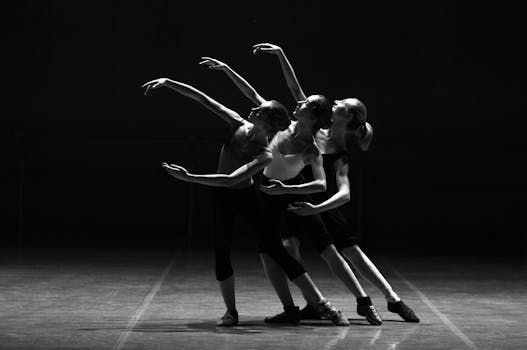Dance Like No One is Watching: A Path to Stress Relief and Mood Enhancement
In today’s fast-paced world, stress has become an unwelcome companion for many. From work pressures to personal responsibilities, finding effective ways to relieve stress is essential for maintaining mental health. One surprisingly effective method is dancing to your favorite music. This article explores how dancing can alleviate stress and improve mood, backed by research and real-life examples.
The Science Behind Dance and Mood Improvement
Dancing is not just a form of artistic expression; it is also a powerful tool for mental well-being. Numerous studies have shown that physical activity, including dance, releases endorphins—chemicals in the brain that act as natural painkillers and mood elevators. According to a study published in the journal Frontiers in Psychology, engaging in dance can significantly reduce symptoms of anxiety and depression.
- Endorphin Release: Dancing stimulates the release of endorphins, which can lead to feelings of happiness and euphoria.
- Social Connection: Group dancing fosters a sense of community, reducing feelings of isolation.
- Mindfulness: Focusing on the rhythm and movement can serve as a form of meditation, helping to clear the mind.
Benefits of Dancing for Stress Relief
Engaging in dance offers a multitude of benefits that contribute to stress relief and improved mood. Here are some key advantages:
- Physical Exercise: Dance is a fun way to get your body moving, which is essential for physical health and stress reduction.
- Emotional Expression: Dance allows individuals to express their emotions creatively, providing an outlet for feelings that may be difficult to articulate.
- Increased Energy: Dancing can boost energy levels, making you feel more alive and engaged in your daily activities.
- Improved Sleep: Regular physical activity, including dance, can lead to better sleep quality, which is crucial for stress management.
Real-Life Examples and Case Studies
Many individuals have found solace in dance as a means of coping with stress. For instance, a case study published in the Journal of Dance Medicine & Science highlighted a group of college students who participated in weekly dance classes. The results showed a significant decrease in stress levels and an increase in overall happiness among participants.
Another example is the “Dance It Out” initiative, which encourages people to take a few minutes each day to dance freely to their favorite songs. Participants reported feeling more relaxed and less anxious after their dance sessions, illustrating the immediate benefits of this simple practice.
How to Incorporate Dance into Your Routine
Incorporating dance into your daily routine doesn’t require a dance studio or formal training. Here are some simple ways to get started:
- Choose Your Music: Create a playlist of your favorite upbeat songs that make you want to move.
- Set Aside Time: Dedicate a few minutes each day to dance, whether it’s in your living room or during a break at work.
- Join a Class: Consider joining a dance class or group to meet new people and enhance your skills.
- Dance Anywhere: Don’t limit yourself to specific locations; dance in the kitchen while cooking or in your bedroom before bed.
Conclusion: Dance Your Way to a Happier You
In conclusion, dancing like no one is watching is more than just a fun activity; it is a powerful tool for relieving stress and improving mood. The science supports the benefits of dance, showing that it can lead to increased endorphin levels, emotional expression, and enhanced physical health. By incorporating dance into your daily routine, you can experience these benefits firsthand. So, turn up your favorite tunes, let loose, and dance your way to a happier, healthier you!
